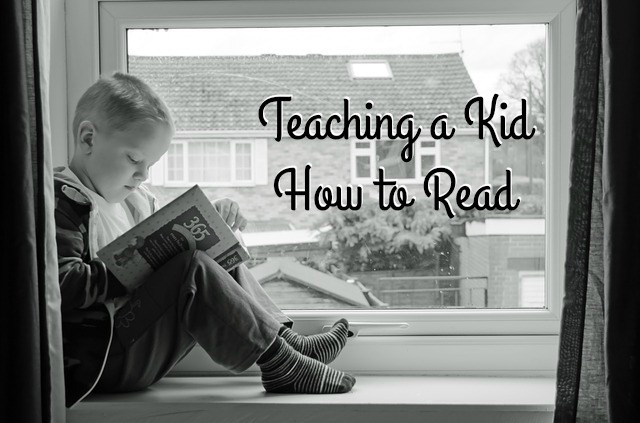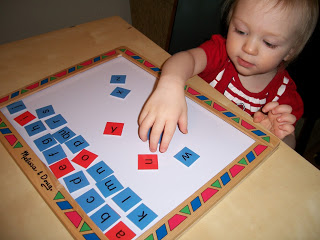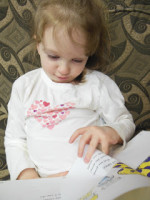 Now that I’m teaching reading for the third time I think I’m getting the hang of it. Way back in my early years in college I took a class on how to teach kids how to read. I’m not sure why I took it since I had no interest in working in schools. I guess it just sounded like an interesting elective. Back then whole language was quite popular and my class focused on how to teach reading using whole language. Whole language is often misconstrued as sight word teaching, but it is more like whole to part reading instruction. You teach reading through reading a real book, paying attention to the context and breaking down some words into sounds and talking about phonics rules for those words.
Now that I’m teaching reading for the third time I think I’m getting the hang of it. Way back in my early years in college I took a class on how to teach kids how to read. I’m not sure why I took it since I had no interest in working in schools. I guess it just sounded like an interesting elective. Back then whole language was quite popular and my class focused on how to teach reading using whole language. Whole language is often misconstrued as sight word teaching, but it is more like whole to part reading instruction. You teach reading through reading a real book, paying attention to the context and breaking down some words into sounds and talking about phonics rules for those words.
My approach to teaching reading is probably a little different than what is commonly used because of my experience with this class and because of the way my kids developed reading skills.
1. Unschooling until the child is starting to sound out words on his/her own
I have typically unschooled reading instruction until a child is starting to sound out words on his or her own. This means I didn’t do letter of the week, letter worksheets, or really focus on learning the letters and letter sounds formally. When I use the word unschool I am referring to intentionally teaching informally.
I tried to set up an environment for learning and used teachable moments when they arose. We read lots of books and had fun talking about letters. For instance, in this picture above I let my youngest play with some of her brother’s magnetic letters. If she grabbed a “w” I might say something like “Oh, you want the w.” Mainly, she played with them on her own. I avoided things like “What letter is this?” and instead I might wonder aloud or be confused about the letter I was holding. Little kids like to be in control and “teach” adults and sometimes it is irresistible for a young child to share their knowledge with a confused adult.
I also liked LeapFrog Fridge Letter Magnets. My youngest child loved to toddle out in the kitchen and put a letter into the correct spot and sing along with the song. I let my kids enjoy computer games involving letters and their sounds too. My boys loved playing Leapster games when they were young. I think my daughter learned her alphabet song by watching Signing Time and attempting to sign along with the song.
2. When the child was ready, I started him/her on an easy reader and phonics.
Once the child is ready to start blending I start them in Fun Tales. I bought it for my oldest son and just continued to use it with my other kids. Although I’ve never been entirely happy with any phonics program, I’ve tended to come back to Explode the Code.It is slow and incremental and it works. I’ve found that the Fun Tales series combined with the first Explode the Code book to be a good fit together.
3. Moving to a whole language approach
Here is where my approach kind of goes off on a different tangent. It was unintentional, but it seemed to work with all my kids. I had purchased Sonlight’s I Can Read It! series of books for my oldest. It is a set of 3 books that takes a child from Fun Tales to reading real books like Cat in the Hat or Little Bear. When my oldest was mostly done with the first book I had to stop using it. He hated it and grew to hate reading. I didn’t want that at all and not having anything else on hand I just jumped ahead to real books like Cat in the Hat and Little Bear. They were part of the Sonlight’s 1st grade reader package I had purchased.
I had to take it slow at first and we looked at new phonics skills in the context of the sentence. So if a new pattern showed up, we talked about it and I explained a bit about the phonics rule. I continued with Explode the Code workbooks for phonics skills, but they were at a lower level than what we encountered in our reading.
This worked. Somehow my oldest caught onto the code and his dislike for reading went away. When my second child started showing dislike for the I Can Read It books I immediately skipped him ahead too. I didn’t even attempt to use them with my third child.
4. Continuing with phonics
Approaching new phonics skills through context seemed to work very well for my oldest child. He jumped a couple reading grade levels the first year and continued to progress in reading. I just kept giving him harder and harder books until he could read most anything. I continued Explode the Code through the third book and then switched to a phonics-based spelling program.
Although my second child’s reading skills were strong, he needed more time spent on phonics. I say that because his phonemic awareness skills were not strong and he had weaker spelling skills. I stuck with phonics through 2nd grade with him and then moved to a focus on spelling. I’m continuing to work one-on-one with him on reading related issues to improve his comprehension and visual tracking skills.
My youngest is currently in the learning to read process so only time will tell how things go with her. At this point I’m planning to continue to use Explode the Code while I gradually increase the difficulty level of the books she is reading. I did do some phonemic awareness activities with her for a couple months before starting Fun Tales. We used Getting Ready to Read for phonemic awareness activities, but I adapted it a little bit to make it more play-based since my daughter was quite young.
5. Avoiding sight words
One thing I did tend to avoid is sight words. I only did a handful with each child and those were high frequency words that didn’t match up with phonics rules that they understood. I think learning sight words is a pretty popular method used now, but we have done fine without it.
How have you approached learning to read in your homeschool?








Update: Kids are so different. I’m moved back to do the I Can Read It! series with my youngest because she started to develop guessing habits. It didn’t work out well so we went with some Dick and Jane books instead. They were just right.